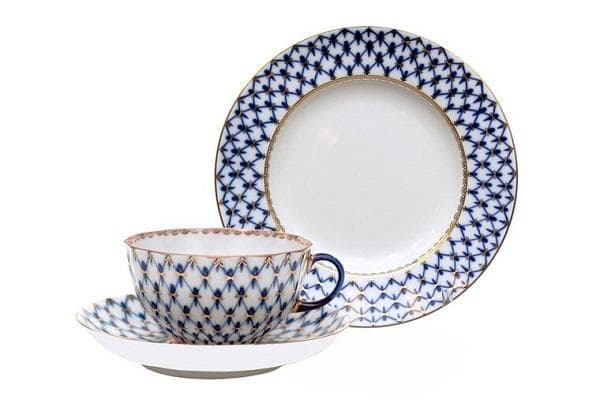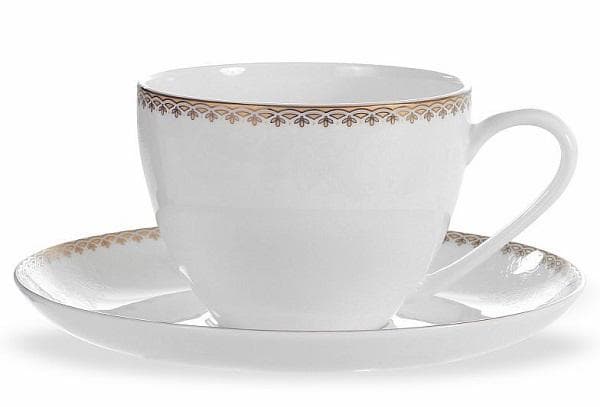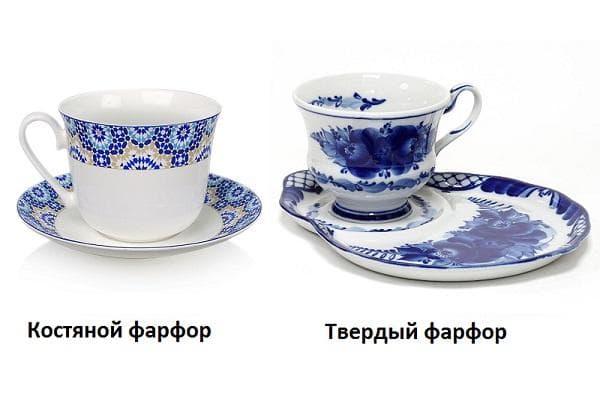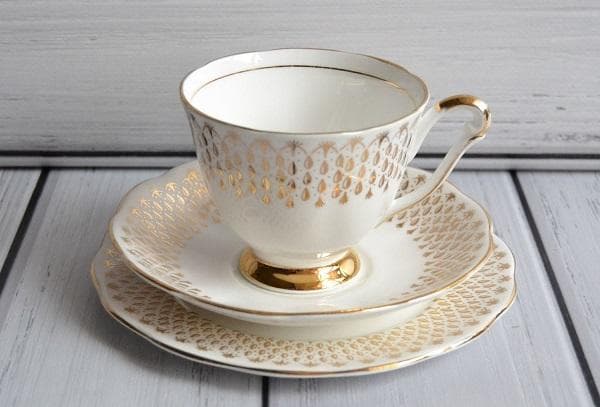What is the difference between hard porcelain and bone porcelain: the difference in strength, thinness and price
Porcelain has a long history and has long been considered a luxury item. It is often purchased by collectors. And what a pleasure it is to eat and drink from porcelain dishes - beautiful, safe and ageless. Products are almost always expensive, so many people are interested in which porcelain is better, bone or hard porcelain? In order not to make a mistake in your choice, we suggest you learn more about it and compare the characteristics of both types.
What is hard porcelain?
Porcelain is a type of ceramic. It is distinguished by high strength, water resistance and transparency. If you look at the light, porcelain products seem to glow from within. This is especially noticeable with small wall thicknesses. In addition, the material differs in its sound. If you lightly hit it with a wooden stick, it seems to “sing” - it makes a high, clear sound.

Porcelain is usually divided into two main groups - hard and soft. Hard porcelain is durable. It is less porous than soft, resistant to internal cracks.
The material is obtained from high-quality white clay (kaolin), quartz sand and feldspar. The formed products are fired twice in a kiln at a temperature of 1400-1460 degrees. They acquire high strength and beautiful color, but remain fragile.
Hard porcelain is:
- hardened;
- bone.
When making hardened porcelain products, metals are added to the mixture with kaolin, which enhance the strength.Such tableware is considered elite and is used in high-class restaurants.
For reference. In addition to soft and hard, there is also the so-called “cold porcelain”. It has nothing in common with ceramic products, and is a homemade modeling mass consisting of starch and PVA glue.
What is bone china?
The name “bone” should be taken literally. This type of porcelain is made with the addition of animal bones, mainly cattle. The bones are burned, ground into flour and lime is obtained.
Bone china contains from 30 to 50% burnt bones.
The additive makes the material especially durable. Bone ash fills all pores and improves the melting of the mixture. The products are very light, thin-walled, and exquisite. Bone china is one of the most valuable. It is bought for collections and used at receptions and banquets of the highest level.
Interesting fact. China is considered to be the birthplace of porcelain. But the bone variety first appeared in England. Trying to discover the Chinese recipe, Englishman Thomas Fry added bone ash to the mixture and discovered that the material was stronger than the original. His idea was taken up by Joseph Spode. This is how modern thin-walled English bone porcelain saw the light, which is still highly valued to this day.
What is the difference between them?
Despite the fact that the materials belong to the same group, the difference between them is colossal.
- As a rule, the walls of bone china products are thin. They can be several times thinner than the walls of ordinary hard porcelain.
- With the same size, bone utensils are lighter.
- If you look through the thin walls of bone china into the light, you can see the outlines of the objects.Unlike bone porcelain, hard porcelain cannot boast such transparency, and is more reminiscent of an eggshell.
Comparison of pros and cons in the table
Bone and hard china are often compared in an attempt to determine which is better. However, opinions differ on this issue.
Admirers of hard porcelain highlight the perfect whiteness. But fans of its bone counterpart call the snow-white color deathly, and note the transparency, thinness and lightness of bone utensils.
We suggest comparing their characteristics, pros and cons in the table:
| Hard porcelain | Bone china | |
| Compound | Up to 66% kaolin, 25% quartz and 25% feldspar | 30-50% bone ash, kaolin, feldspar, quartz |
| Firing temperature | 1400 °C -1460 °C | 1100 °C -1500 °C |
| Color | Snow-white, bluish, gray tint | Milky white |
| Motherland | China | England |
| The best manufacturers | Meissen, Seltmann Weiden, Imperial porcelain (Russia), Rudolf Kampf, Herend, Bernardaud
|
Spode, Noritake, Wedgwood, Royal Doulton, Vera Wang, Villeroy & Boch, Imperial porcelain (Russia) |
| Transparency | + | ++ |
| Strength | + | ++ |
| Fragility | + | ++ |
| Lightness (weight) | — | + |
| Thin walls | — | + |
| Practicality | + | — |
| Average cost (per service) | 300-5000 dollars | 700-16000 dollars |
Which is better to choose?
Glass, earthenware, and ceramic dishes cannot be compared with noble porcelain. All over the world it is considered the most elite and is a symbol of wealth that is not subject to time and fashion trends. However, not everyone can afford an expensive set, especially a collectible one.
Therefore, it is right to choose porcelain products based on your financial capabilities and purpose:
- You can choose any set for a gift, but bone ones from trusted brands are more highly valued.
- For everyday use, it is better to purchase tableware made of hard porcelain in a budget version. Even inexpensive porcelain plates and cups are considered many times more prestigious than heavy and opaque earthenware ones.
- At special events, it is more prestigious to use luxury hard porcelain, and for tea drinking - a real English porcelain service.
Questions and answers
How to distinguish real porcelain from fake?
In order not to run into a fake, you should buy porcelain products in large specialized stores or from official dealers who have all the necessary documentation. If a bone product is selected, then the bone ash content must be at least 30% (the more it is, the higher the price). In this case, the documents must include the word “Bone”, which translates as “bones” - “Royal Bone China”, “Fine Bone China” (bone china). If the dishes have already been purchased, just look at the rim on the bottom. In real porcelain products it is not covered with glaze.
Can porcelain be washed in the dishwasher and used in the microwave?
Almost all modern porcelain dishes are suitable for use in the microwave and dishwasher. To make sure of this, you need to look at the markings. The exception is products with painting on top of the glaze. Do not place dishes with gold or platinum patterns in the microwave.
It is somewhat wrong to judge which porcelain is better, hard or bone, without knowing the brand and purpose of the product. Bone products are usually more expensive, and are represented mainly by tea and festive sets, and collectible plates. Hard porcelain is more diverse. You can choose both an everyday set of dishes and a festive one.The choice between them is individual, and depends on financial situation and taste.



